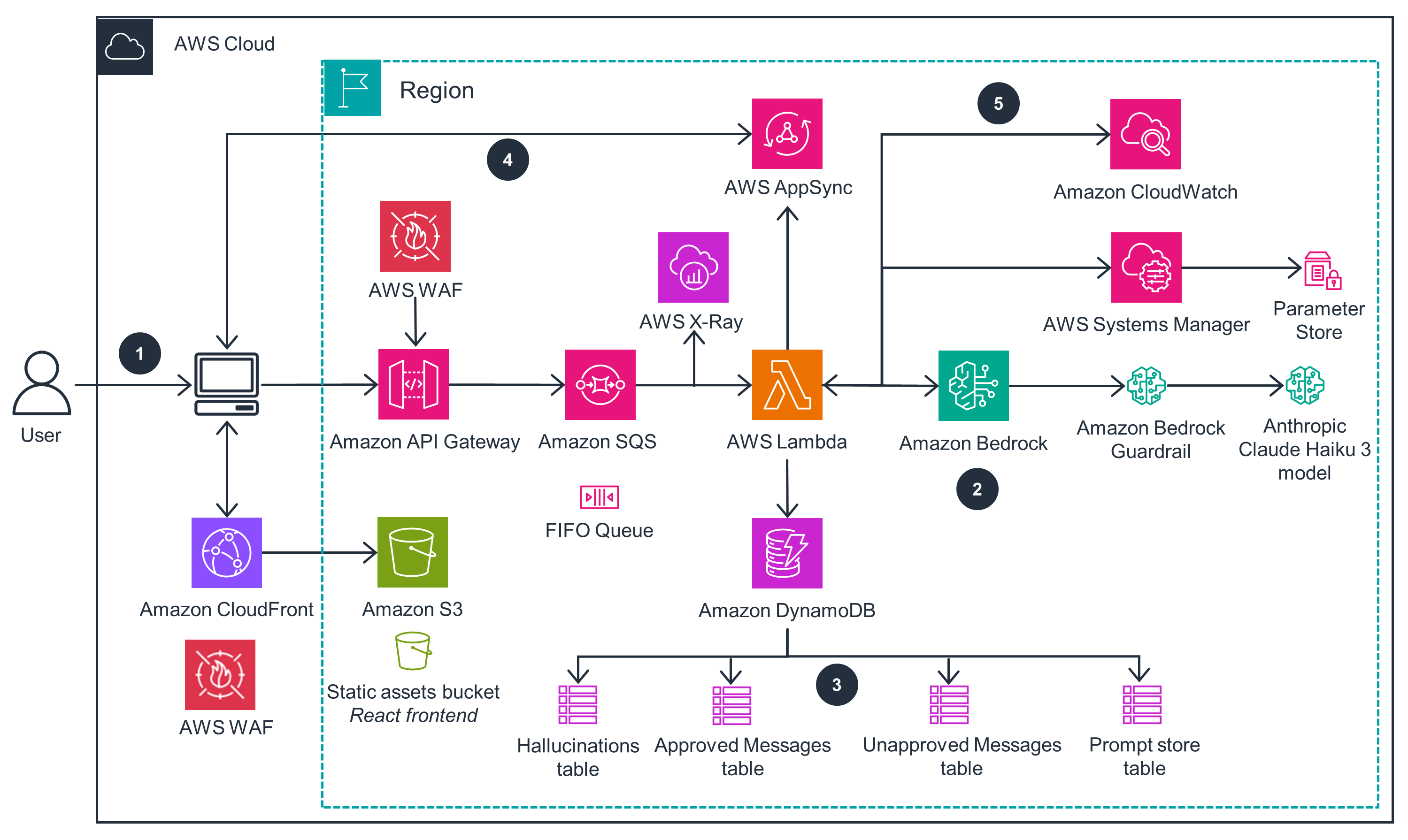Overview
This Guidance demonstrates how organizations can implement generative artificial intelligence (AI) services for automated message screening in live chat environments. The architecture integrates with existing chat platforms through a secure, scalable cloud infrastructure. It also uses AWS machine learning services to offer near real-time content analysis and customizable filtering rules. Organizations can significantly reduce manual reviews, maintain consistent moderation standards, and create safer communication environments by automatically detecting and filtering inappropriate content across multiple languages. This approach helps businesses efficiently manage content moderation at scale while improving user experience and safety.
How it works
This architecture diagram illustrates a real-time chat moderation system designed for live streaming platforms. It uses AWS services and generative artificial intelligence (AI) to automatically filter and moderate chat messages, creating a safer and more engaging environment for users.

Get Started
Well-Architected Pillars
The architecture diagram above is an example of a Solution created with Well-Architected best practices in mind. To be fully Well-Architected, you should follow as many Well-Architected best practices as possible.
Disclaimer
Did you find what you were looking for today?
Let us know so we can improve the quality of the content on our pages